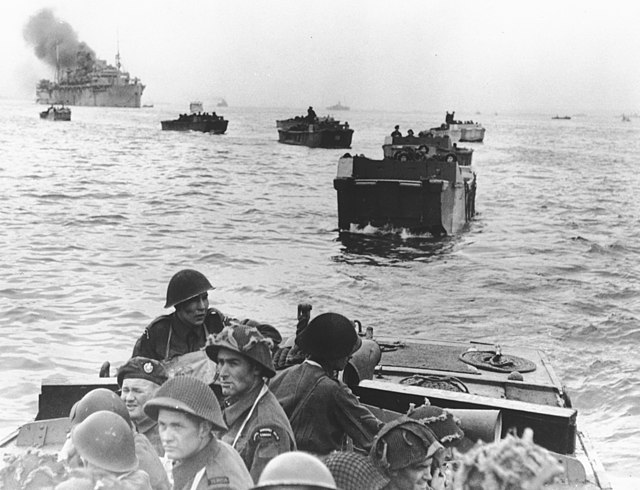Landing Craft Assault (LCA) was a landing craft used extensively in World War II. Its primary purpose was to ferry troops from transport ships to attack enemy-held shores. The craft derived from a prototype designed by John I. Thornycroft Ltd. of Woolston, Hampshire, UK. During the war it was manufactured throughout the United Kingdom in places as various as small boatyards and furniture manufacturers.
LCA (Landing Craft Assault) form line ahead as they move off from the landing ship Llangibby Castle, carrying troops of the Winnipeg Rifles to Juno Beach, Normandy, June 6, 1944
Royal Navy Beach Commandos aboard a Landing Craft Assault of the 529th Flotilla, Royal Navy
A newly completed LCA (assault landing craft) ready for launching, 1942.
Royal Navy Landing Craft LCA-1377 carries American troops to a ship in a British port, during preparations for the Normandy invasion, circa May–June 1944.
Landing craft are small and medium seagoing watercraft, such as boats and barges, used to convey a landing force from the sea to the shore during an amphibious assault. The term excludes landing ships, which are larger. Production of landing craft peaked during World War II, with a significant number of different designs produced in large quantities by the United Kingdom and United States.
Landing Craft, Vehicle, Personnel (LCVP) used in the Invasion of Normandy in World War II
Dutch landing craft
Finnish Jehu-class landing craft
The Soviet-built PTS-M is an unarmoured, fully tracked landing craft that was designed to transport troops or equipment inland.








